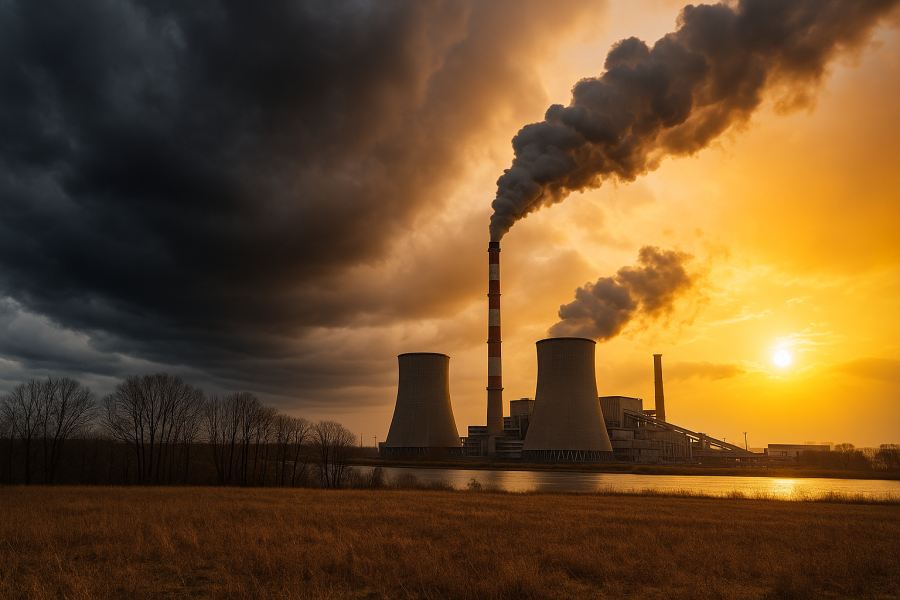Over the past decades, Poland - like much of Europe - has increasingly felt the effects of global warming. Climate change is impacting not only the natural environment but is also fundamentally reshaping the structure of energy demand, particularly in the heating sector.
An analysis of temperature trends in Poland, from the 1960s through to mid-21st century projections, reveals a significant and sustained decline in heating demand - regardless of demographic, urban, or modernization policies. This shift carries both strategic and economic implications for the transformation of the district heating sector.
Climate change – data and historical perspective
According to data published by the National Centre for Research and Development (NCBR) and the Nauka o Klimacie portal, the average annual temperature in Poland between 2011 and 2020 was approximately 1.6°C higher than in the baseline reference period of 1961–1990. Though seemingly modest, this temperature increase had a very tangible consequence: a 12% reduction in heating demand, as measured by Heating Degree Days (HDD).
Forecasts suggest that a further increase in average temperatures - by another 1.5–1.6°C by 2050 - could lead to an additional 12% drop in heating demand. On a national scale, in the context of existing heating infrastructure and planned decarbonization, this implies the urgent need to adapt systems to new demand conditions - regardless of efforts related to energy efficiency, demographic trends, or source replacement.
Energy impacts of climate-driven “heat saving”
A declining demand for heat means that existing district heating systems - especially large-scale, network-based ones - will be operating under lower loads for increasingly longer portions of the year. This brings several key challenges:
- Excess capacity – many current systems were designed for climatic conditions of past decades. As a result, their generation capacity may be oversized relative to future demand, leading to operational inefficiencies and higher fixed costs.
- Lower revenues for operators – less heat sold directly translates to decreased income under traditional tariff models based on unit energy sales.
- Need for greater flexibility – systems will need to better respond to demand fluctuations, particularly during shoulder seasons (autumn/spring), as the heating season shortens.
However, it is important to emphasize that declining heat demand does not automatically mean reduced importance for district heating. On the contrary, the sector may play a pivotal role in the energy and climate transition - provided it adapts accordingly.
Decarbonizing district heating – a technological and climate imperative
As emphasized in the Concept for the Decarbonization of District Heating in Poland developed by NCBR, the district heating sector remains one of the key areas for energy transition. Currently, around 80% of Poland’s heat is generated from fossil fuels, primarily coal and natural gas.
Decarbonizing this sector will require:
- Replacing conventional sources with renewable technologies, including large-scale heat pumps, geothermal systems, solar thermal collectors, and electrode boilers powered by renewable electricity.
- Integrating heat storage to better manage supply and demand variability.
- Upgrading transmission infrastructure and lowering system temperatures (so-called low-temperature district heating networks), enabling better integration with energy - efficient buildings.
The reduction in heat demand driven by climate change also opens up opportunities for emission reductions, as systems can handle lower loads in a more sustainable way - for example, through renewable-based cogeneration or waste heat recovery.
Buildings, demographics, and energy efficiency as future catalysts of change
It’s essential to note that the 12% decline in heat demand by 2050 discussed earlier reflects only the effect of climate change - excluding the impact of:
- Building renovations and thermal modernization
- Demographic shifts (declining population, urban migration, depopulating rural areas, and an aging workforce that may force closures of many small and medium-sized enterprises due to labor shortages and rising costs)
- Replacement of outdated heat sources with more efficient ones (e.g., heat pumps, heat recovery systems)
- Implementation of intelligent energy management systems
- Reduction of transmission and distribution losses
In practice, the total decline in actual heat energy demand could exceed 50% and approach 60% over the next 25 years - by 2050. For district heating systems, this necessitates a complete overhaul of the business model, shifting the focus from simply selling energy to providing energy services such as flexibility, cooling, and grid balancing.
A new paradigm for heating in the era of climate change
While climate change poses serious threats in many areas, in the context of the heating sector, it can also serve as a modernization driver. Systems that succeed in adapting to lower and more variable demand, flexibly integrating renewable sources, and offering comprehensive energy services could become a cornerstone of low-emission urban and community transformation.
At the same time, ignoring the impact of climate change on demand profiles may lead to overestimated investment needs, overcapacity, and continued reliance on inefficient tariff models. That is why historical and forecasted temperature trends - such as those from 1961 – 2020 and projections to 2050 - must become a standard element of strategic energy and climate planning in Poland.
Moreover, sector coupling - the integration of the power and heat sectors - will enable surplus electricity production to be used in district heating via energy storage. This will also accelerate the electrification of heating and allow district heating companies to feed capacity into the national power grid (KSE). According to industry experts, the district heating sector could deliver between 5 and 8 GW of capacity to the grid.
